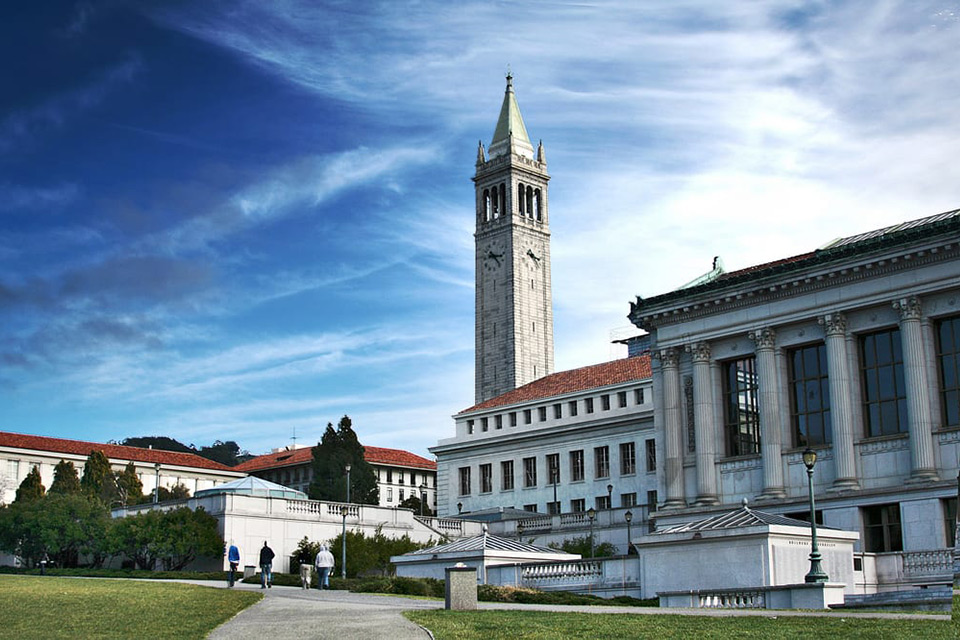California, often referred to as the “Golden State,” is home to some of the most prestigious and renowned universities in the world. The state’s higher education institutions are widely recognized for their commitment to academic excellence, cutting-edge research, and a diverse student population. From the iconic University of California (UC) system to the prestigious private universities such as Stanford, California’s universities offer a wide array of opportunities for students seeking to advance their education and pursue meaningful careers. This article delves into the history, impact, diversity, and future of California’s universities, exploring what makes them stand out globally.

The University of California System: A Legacy of Excellence
The University of California system, often regarded as one of the most influential public university systems in the world, includes 10 campuses across the state, with the most famous being UC Berkeley, UCLA, and UC San Diego. The UC system is known for its world-class faculty, cutting-edge research, and a commitment to providing affordable education to residents of California and beyond.
UC Berkeley, established in 1868, is the flagship campus of the UC system. It is consistently ranked among the top universities globally and is a center of groundbreaking research. The university has contributed to various innovations in technology, science, and the humanities, including the development of the first atomic bomb, the discovery of the structure of DNA, and the creation of influential social movements.
UCLA (University of California, Los Angeles) is another powerhouse within the UC system. Established in 1919, UCLA is a leader in fields such as engineering, film, and medicine. The university’s strong athletic programs, particularly in basketball, have also brought it into the spotlight. The combination of excellent academic programs and a thriving campus culture makes UCLA a top choice for students.
UC San Diego, founded in 1960, is known for its strong programs in oceanography, biology, and engineering. The campus is located near the Pacific Ocean, offering students access to world-class research facilities and a vibrant academic community.
The UC system is known for its research contributions, diverse student population, and robust support for students through programs that foster inclusion and innovation. Its affordable in-state tuition, cutting-edge research, and focus on public service make it an attractive option for students from all over the globe.
The California State University System: Serving the Public Good
While the University of California system focuses heavily on research, the California State University (CSU) system, which comprises 23 campuses, emphasizes accessible and high-quality undergraduate and graduate education. The CSU system serves a critical role in educating a large portion of California’s students, offering affordable education to residents while preparing them for careers in fields such as business, engineering, education, and healthcare.
CSU campuses, such as Cal State Long Beach, Cal Poly San Luis Obispo, and San Diego State University, are known for their strong undergraduate programs and commitment to student success. The system is particularly recognized for producing graduates who go on to make significant contributions to the workforce, especially in public service and technical fields.
One notable feature of the CSU system is its focus on community engagement and outreach. Many campuses work closely with local industries and government agencies to ensure that students have access to internships, job opportunities, and practical learning experiences. Additionally, CSU institutions have strong programs for first-generation college students, offering them mentorship and support as they navigate their academic journeys.
Private Universities in California: The Ivy Leagues of the West
In addition to its prestigious public universities, California is also home to some of the nation’s top private universities. Among the most well-known are Stanford University, the California Institute of Technology (Caltech), and the University of Southern California (USC).
Stanford University, located in the heart of Silicon Valley, is one of the world’s most prestigious and selective universities. Founded in 1885, Stanford is known for its world-class faculty, rigorous academic programs, and exceptional research facilities. The university has produced many successful entrepreneurs, scientists, and politicians, including former U.S. Secretary of Defense Leon Panetta and Google co-founders Larry Page and Sergey Brin. Stanford’s proximity to Silicon Valley provides students with unparalleled access to the technology sector, fostering an environment of innovation and entrepreneurship.
Caltech, located in Pasadena, is another elite private institution that has made a lasting impact on science and technology. Founded in 1891, Caltech has become synonymous with cutting-edge research, particularly in the fields of physics, engineering, and astronomy. Nobel laureates, astronauts, and groundbreaking researchers have emerged from Caltech, contributing to advancements in space exploration, quantum mechanics, and environmental science.
The University of Southern California (USC), located in Los Angeles, is another prestigious private university that offers strong programs in the arts, business, engineering, and film. USC’s film school, in particular, is one of the best in the world, attracting students from across the globe who wish to pursue careers in the entertainment industry. USC also boasts a large and influential alumni network, making it an attractive option for students interested in forging connections in various industries.
Diversity and Inclusion: A Pillar of California’s Universities
One of the defining characteristics of California’s universities is their diversity. The state’s universities serve as microcosms of the broader population, with students from various ethnic, cultural, and socioeconomic backgrounds coming together to form a rich and dynamic academic community.
The University of California system, for example, has a long-standing commitment to increasing diversity on its campuses. In addition to recruiting students from underrepresented groups, the UC system has implemented programs that focus on promoting inclusivity and combating bias. Many of the UC campuses have strong partnerships with community colleges, helping first-generation students make the transition to four-year universities.
California’s private universities also reflect the state’s diverse demographics. Stanford and USC, for example, actively recruit students from across the globe, fostering a sense of internationalism and cultural exchange. Moreover, these universities offer a wide range of support services to help students from underrepresented groups succeed academically and socially.
In California, diversity extends beyond ethnicity and culture to include intellectual diversity. Universities in the state are known for encouraging students to engage in critical thinking, debate, and the free exchange of ideas. This open-minded approach helps foster creativity and innovation, preparing students to tackle complex global challenges.
Research and Innovation: A Global Leader
California’s universities have long been at the forefront of groundbreaking research and technological innovation. The state is a global leader in fields such as artificial intelligence, biotechnology, aerospace, and environmental science.
The UC system, in particular, has produced numerous Nobel laureates and made significant contributions to scientific knowledge. UC Berkeley, for example, is home to the world-famous Lawrence Berkeley National Laboratory, which conducts research in physics, chemistry, and biology. Similarly, UC San Francisco is renowned for its medical research, particularly in the fields of cancer and neuroscience.
Stanford University and Caltech also have global reputations for their research prowess. Stanford’s involvement in the development of the internet, and Caltech’s contributions to space exploration, are just a few examples of how California’s universities have shaped the world’s technological landscape.
Moreover, the close collaboration between universities and the private sector in California, particularly in Silicon Valley, has fostered an entrepreneurial culture that encourages students and researchers to translate their discoveries into real-world applications.
The Future of California’s Universities
Looking ahead, California’s universities are poised to continue their role as leaders in higher education, research, and innovation. With advances in technology, changes in global demographics, and the growing demand for interdisciplinary education, California’s universities are evolving to meet the challenges of the 21st century.
One area of growth is in online education and distance learning. As technology continues to advance, many of California’s universities are exploring new ways to offer flexible, accessible learning options for students. Additionally, universities are increasingly focusing on interdisciplinary programs that combine fields such as technology, business, and the humanities to prepare students for a rapidly changing job market.
California’s universities also face challenges related to affordability and accessibility. The rising cost of tuition, coupled with the growing demand for a college education, has made it more difficult for some students to attend college. However, the state’s universities are committed to finding solutions, such as expanding financial aid opportunities, increasing the availability of scholarships, and offering more affordable degree programs.
In conclusion, California’s universities continue to be at the forefront of higher education, offering students world-class academic programs, cutting-edge research opportunities, and a diverse and inclusive environment. From the University of California system to private institutions like Stanford and USC, these universities play a vital role in shaping the future of education, technology, and society. As they adapt to the challenges of the future, California’s universities will remain a beacon of opportunity for students seeking to make a difference in the world.
